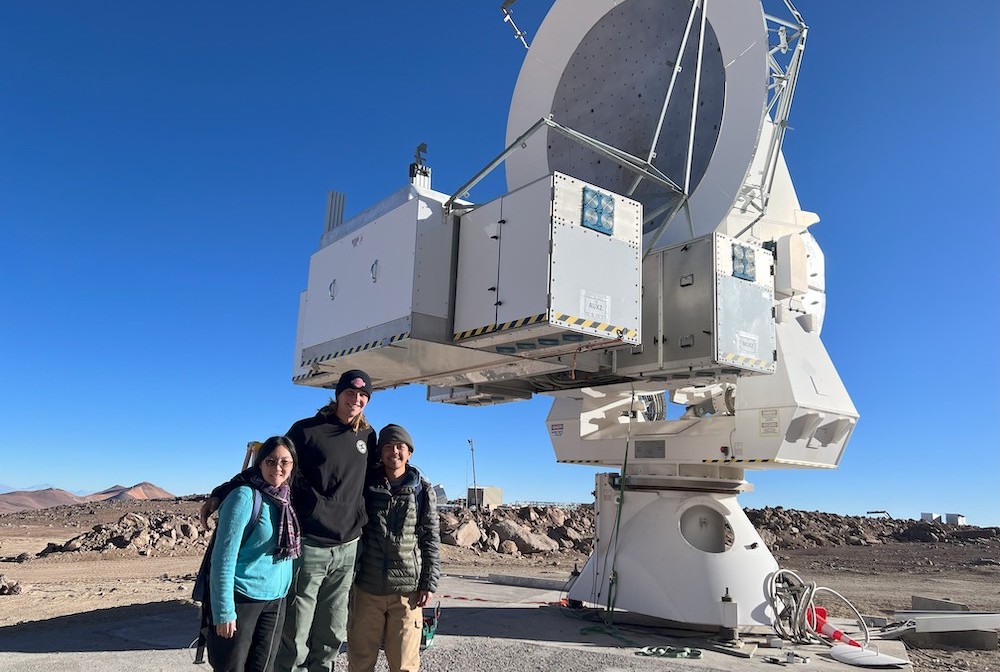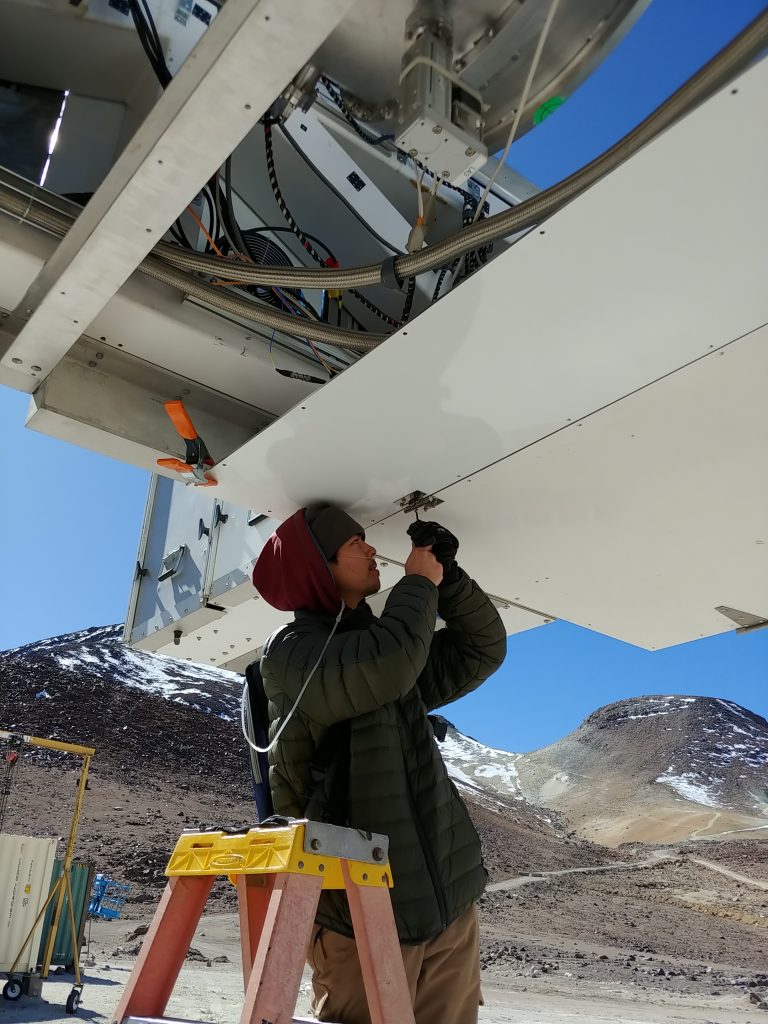Physics Students Work at Chilean Telescopes

For the first time in more than a decade, undergraduate students assisted with research at the Simons Array, a set of three telescopes in the Atacama Desert in Chile at an elevation of about 17,000 feet. Westmont students Michael Lew and Jacob Nelson joined Jen Ito, assistant professor of physics, at the site, an expansion of the original POLARBEAR (POLARization of the Background Radiation) experiment that UC Berkeley pioneered to study the cosmic microwave background (CMB).
“By studying the CMB, we hope to discover more about the early history of the universe,” she says. “Specifically, we hope to determine if an event known as inflation occurred when the universe was fractions of a second old.”
Inflation, a cosmological theory of exponential expansion of space in the early universe, is believed to have lasted about 10 to the power −36 seconds (or 1/1,000,000 with 30 more zeros) after the Big Bang.
The Simons Array telescopes each house a camera, called a cryogenic receiver, with internal temperatures as low as a fraction of a degree above absolute zero, which is about -459 °F. Shaped like a digital camera with a 1.5-meter square box and a two-meter-long lens, the devices detect light in the millimeter wavelength or microwave regime of the electromagnetic spectrum using superconducting technologies.

Ito worked on a project at the Simons Array as a graduate student at UC San Diego. “I was one of a few leaders in building, testing, and deploying the second telescope camera to the site in Chile,” she says. Since joining Westmont in Fall 2022, Ito has continued to collaborate with her colleagues to calibrate and prepare the telescope for scientific observations.
“Since people needed to work at the site this summer, I decided to deploy with two research students for the month of June,” she says. “It’s a unique opportunity, especially for undergraduates.
“Operating equipment in a remote location involves many different moving pieces. Some work pertained to investigating abnormalities with our camera while other tasks revolved around building an enclosure around our camera to protect it from the elements. Additionally, we fixed a piece of equipment necessary for regular observations. We also performed tests in an effort to reduce the amount of noise the detectors in our camera receive, which is particularly important as we need a low-noise environment to acquire meaningful data.”
“I was fascinated by the telescope, the electronics, and the animal life at the site,” Lew says. “Growing up, I had often thought about the creation of the early universe. With this opportunity, I got to play a part in that research.”
The unique experience helped solidify Lew’s future career goals, the kind of graduate school he wants to attend and the potential for a research career. “As a rising senior, I’ll be applying for grad school soon, and this experience helped me understand what it means to work with an astrophysics collaboration,”
he says.
The Simons Array, funded in part by American mathematician and billionaire Jim Simons and the National Science Foundation, is a massive project requiring many participants. Scientists from UC San Diego, UC Berkeley, University of New Mexico, University of Tokyo, and the High Energy Accelerator Research Organization in Japan, known as KEK, have collaborated at the site.
“These institutions regularly send professors, graduate students, and postdoctoral researchers thousands of miles to work in some of the most desolate conditions on the planet,” Nelson says. “It was incredible to be able to be a part of the troubleshooting and continued installation of this project.”
He also learned that he didn’t need to pursue a doctorate in order to contribute and be a valuable and successful physicist. “I learned where doctorates are valuable and less valuable, and for my career, goals, and other aspirations, I am considering jumping right into industry after graduation, and hopefully getting a master’s degree somewhere down the road.”
The public is invited to learn more at the Celebration of Summer Research on Friday, October 13, from 3:30-5 pm in the Winter Hall rotunda.







